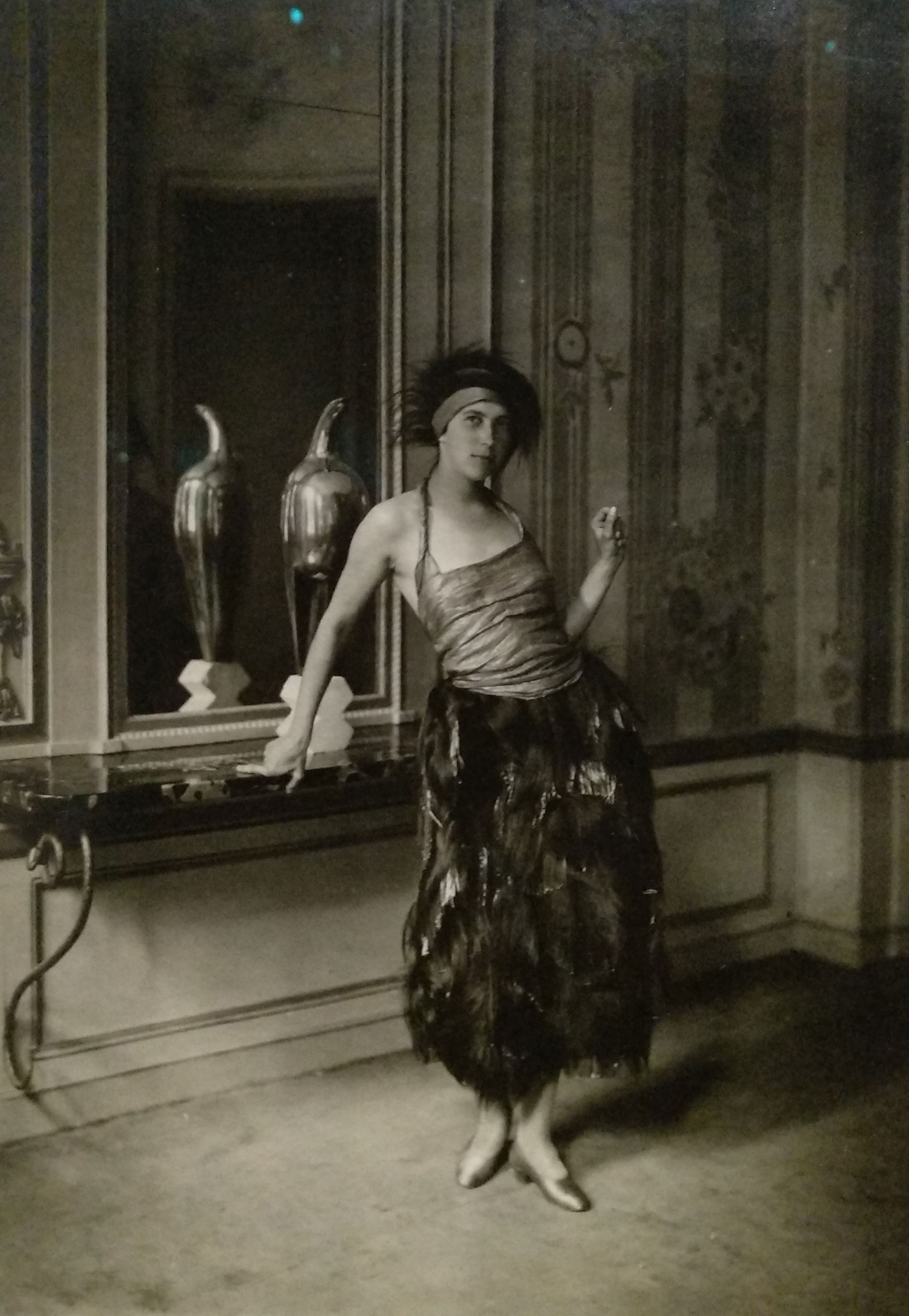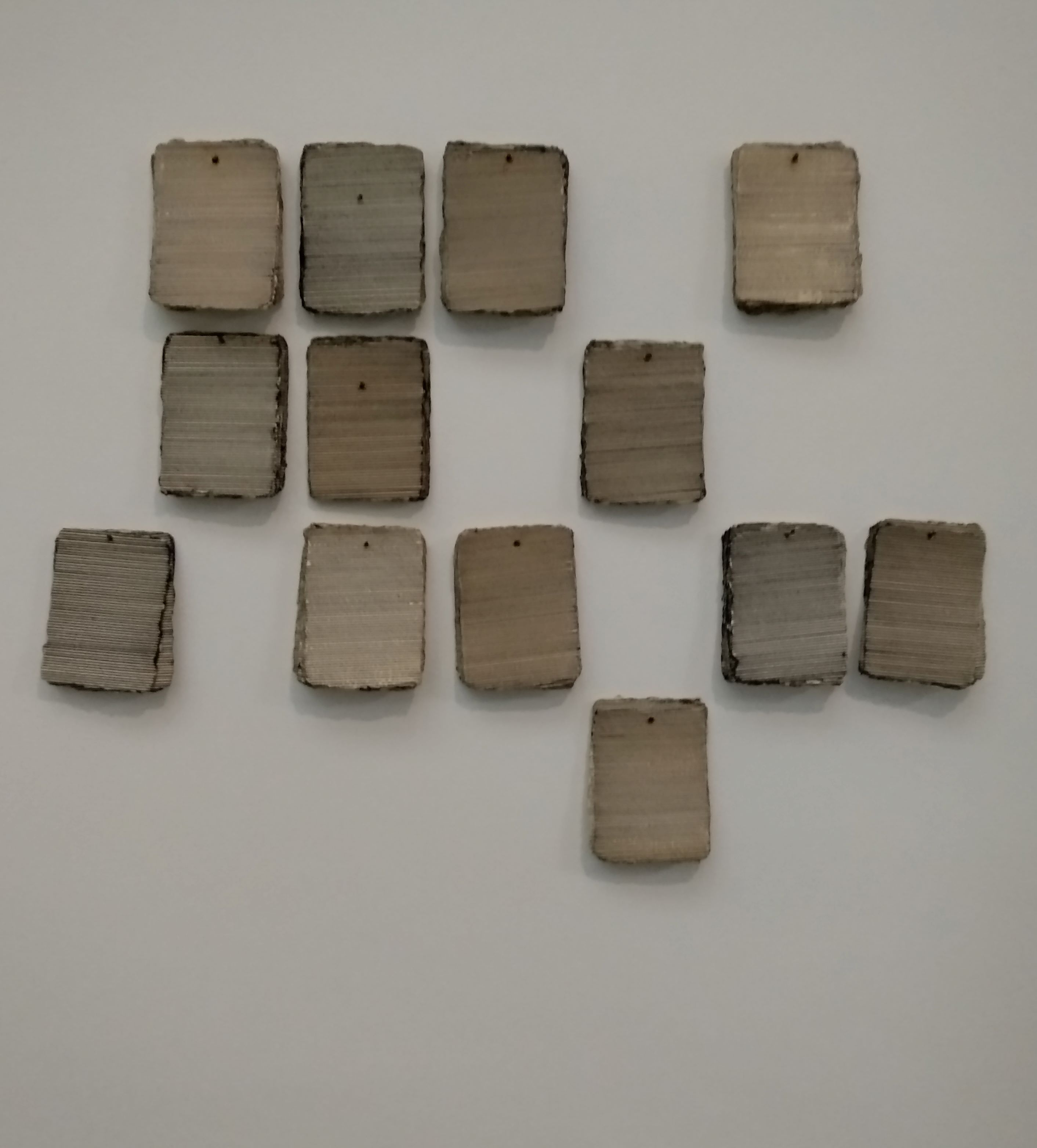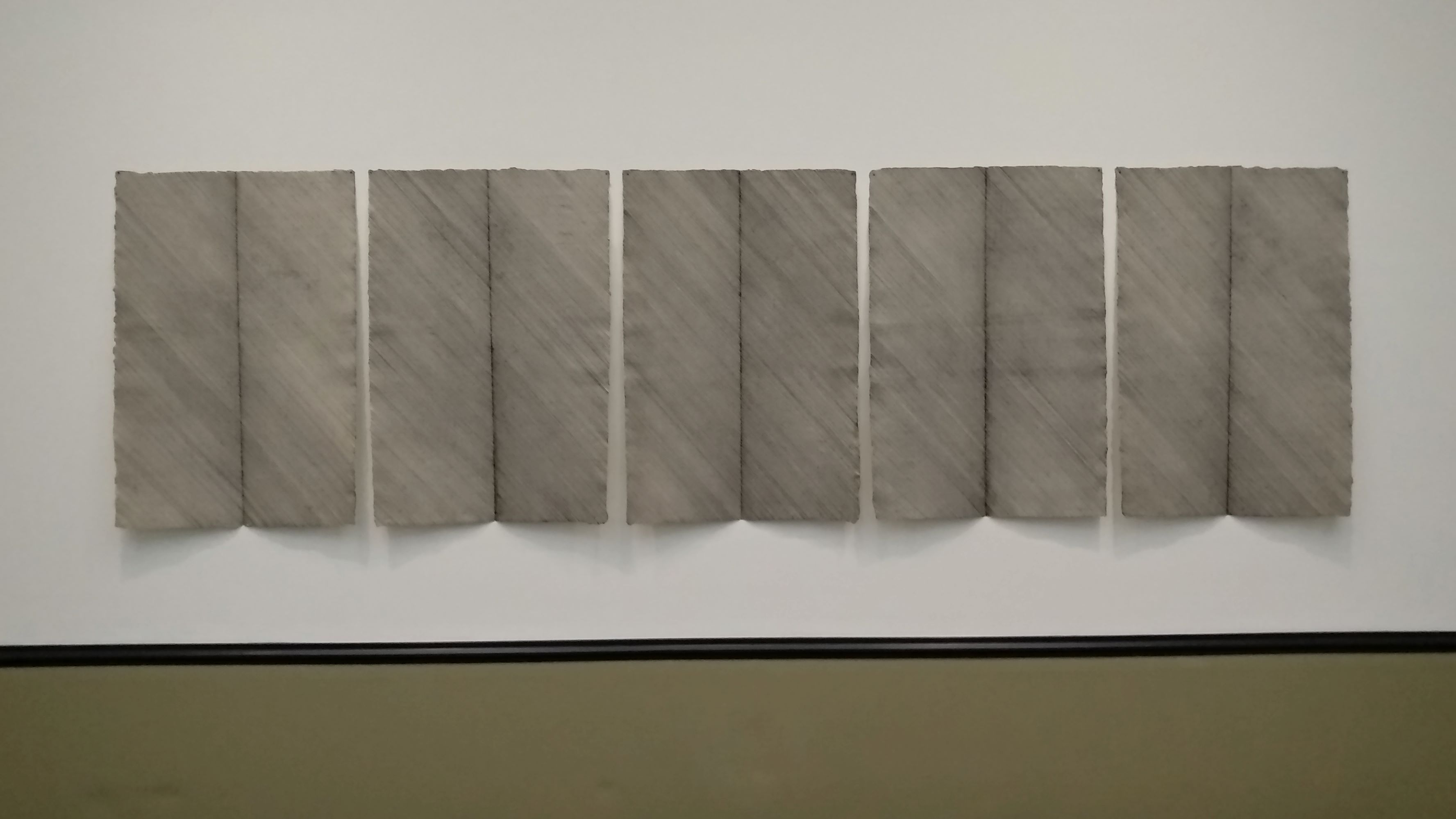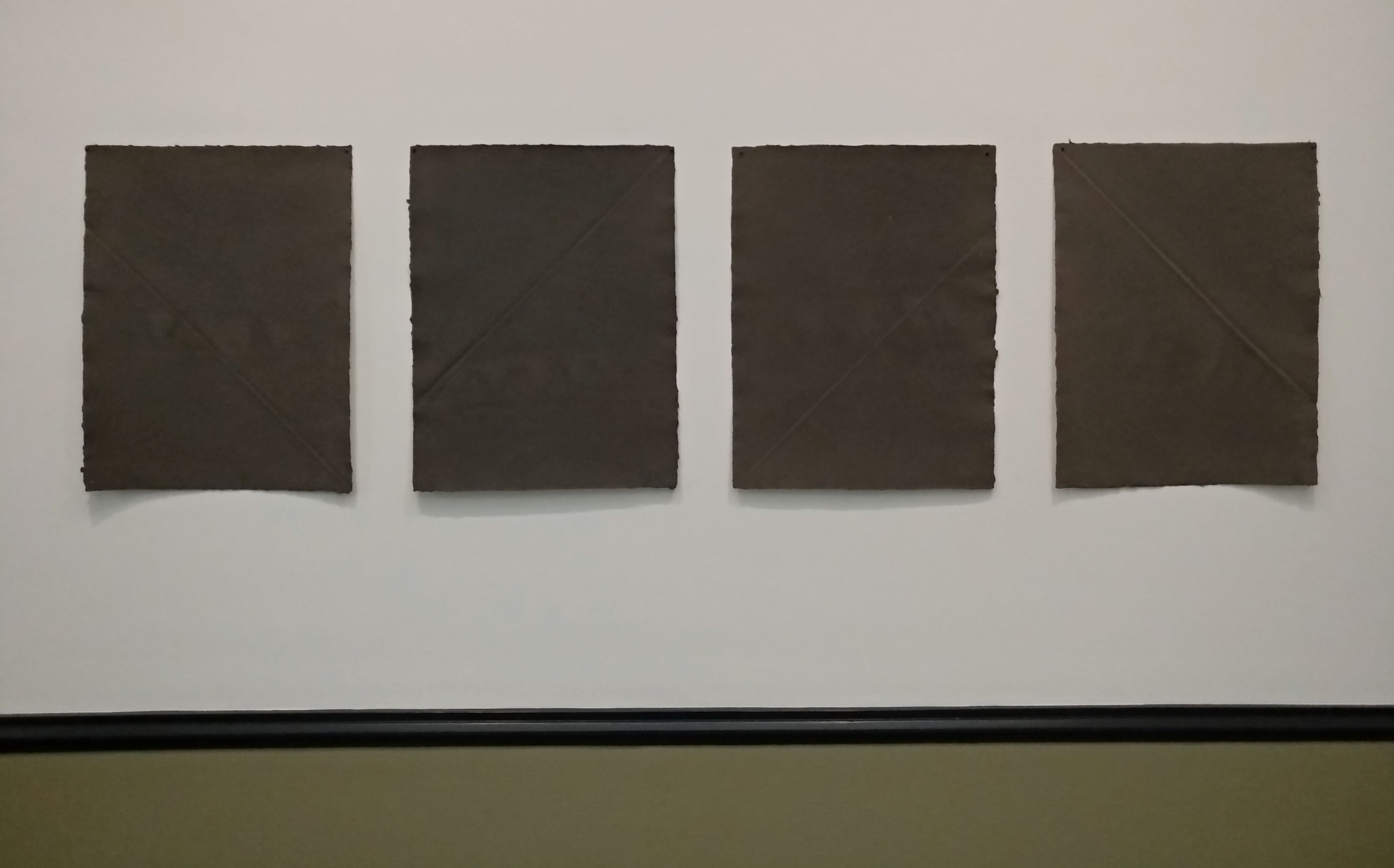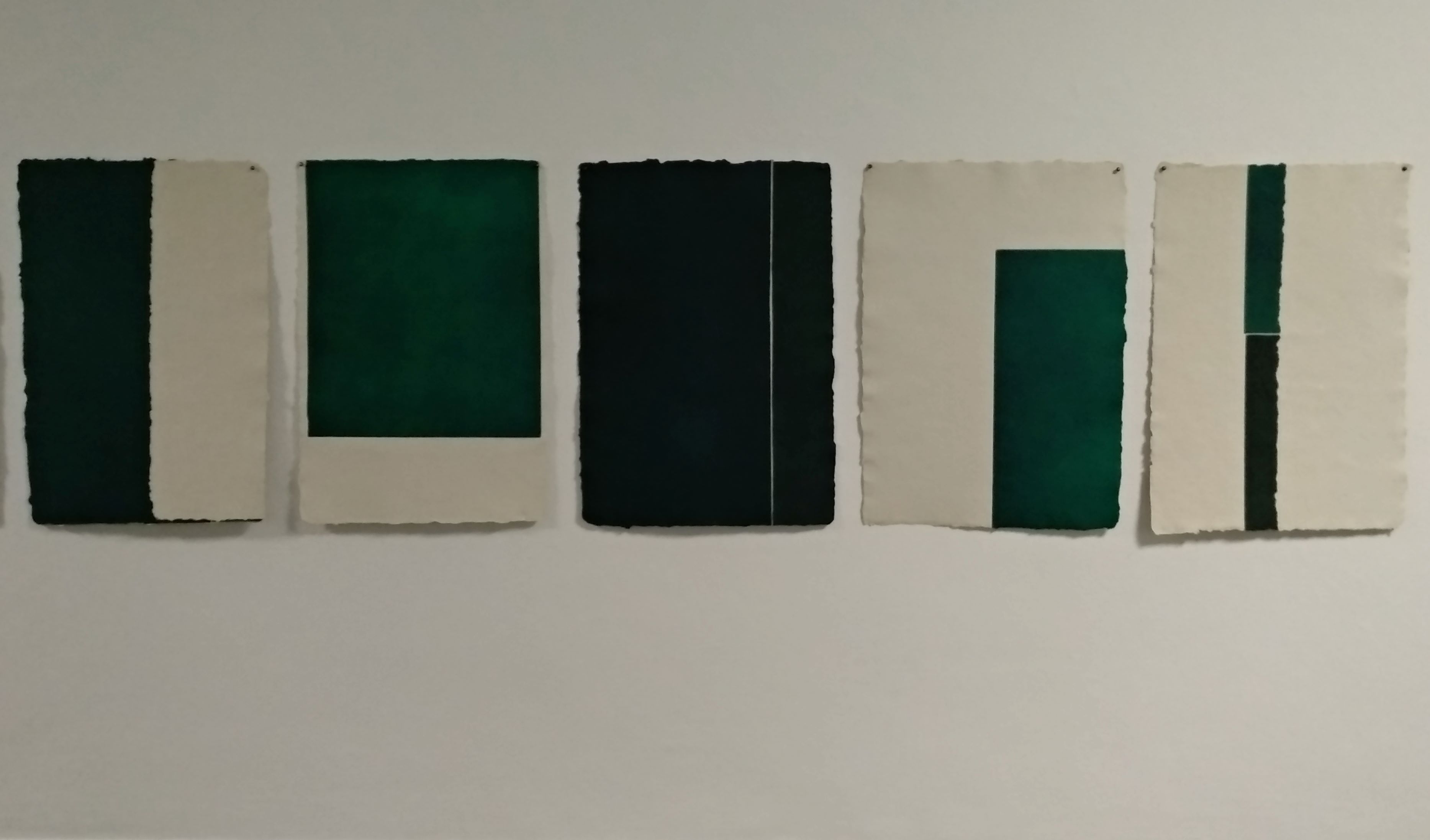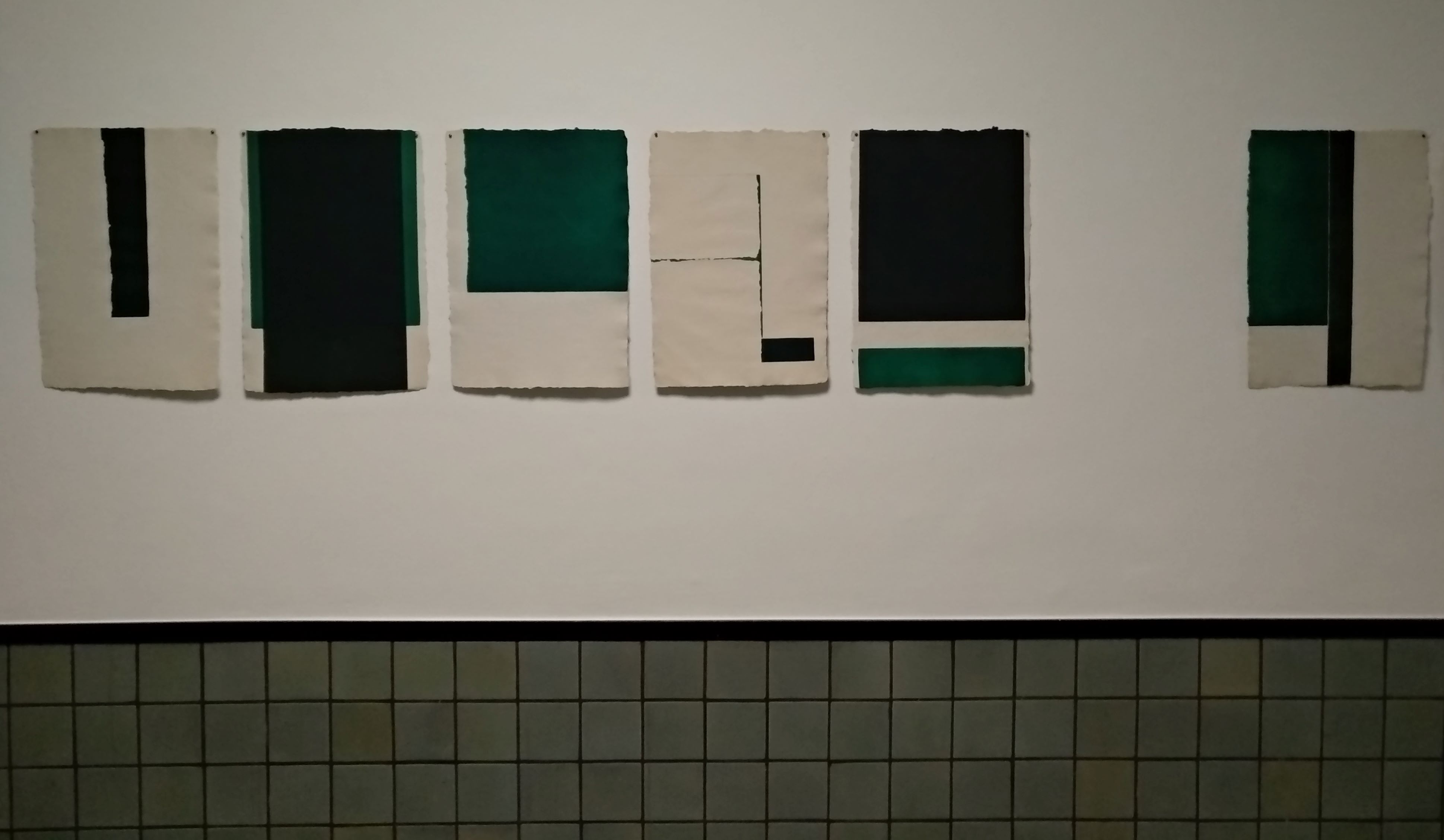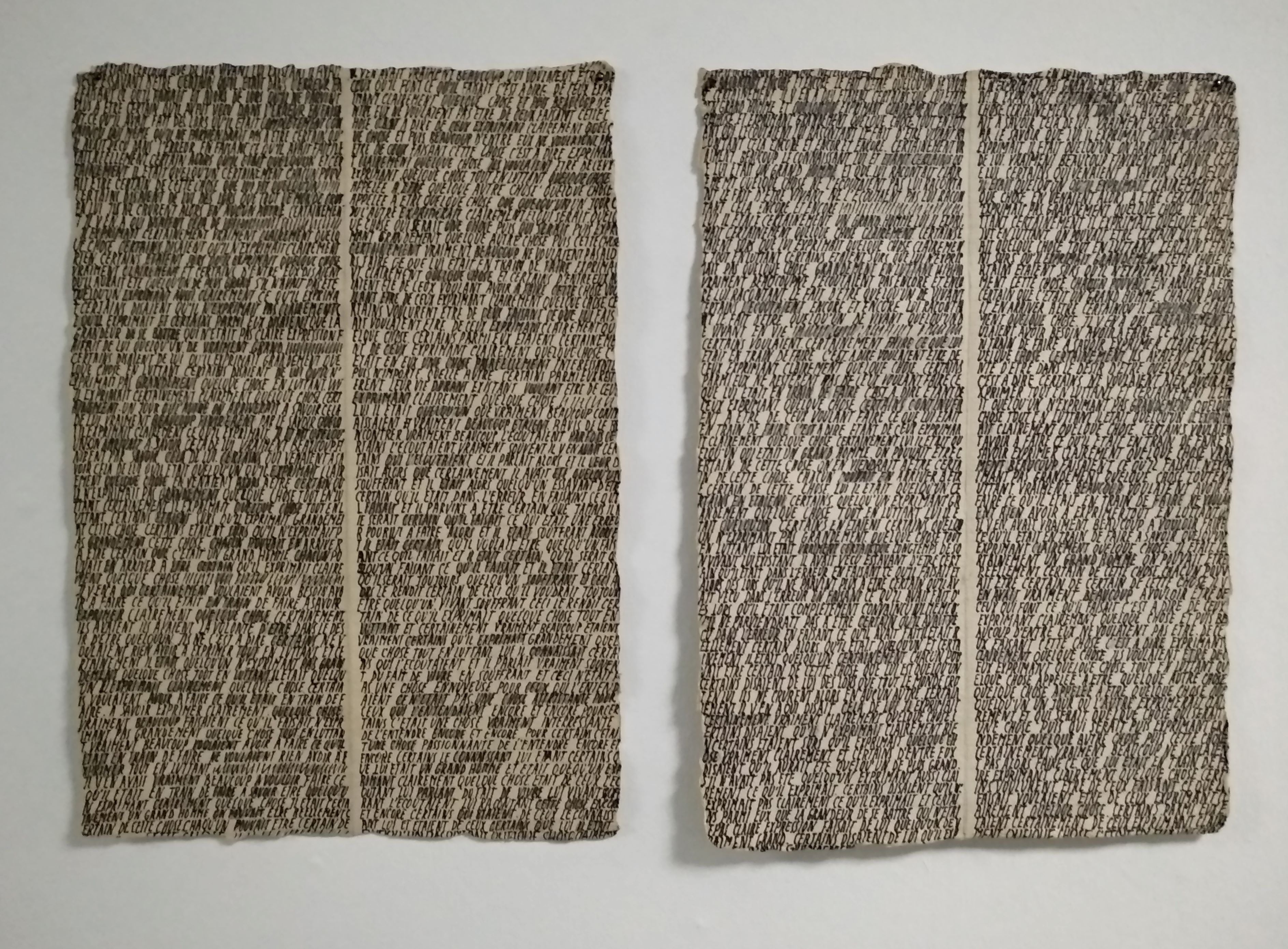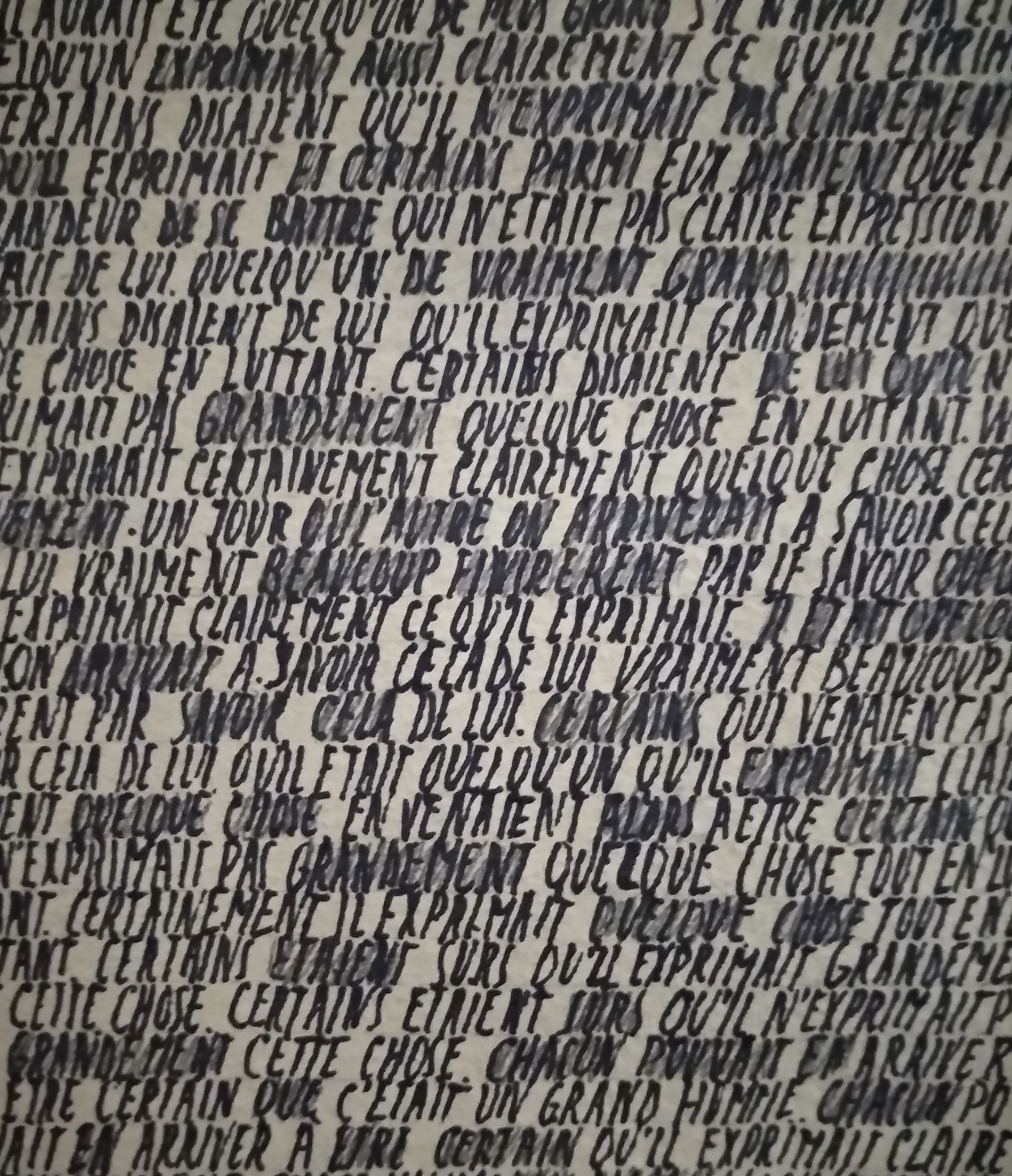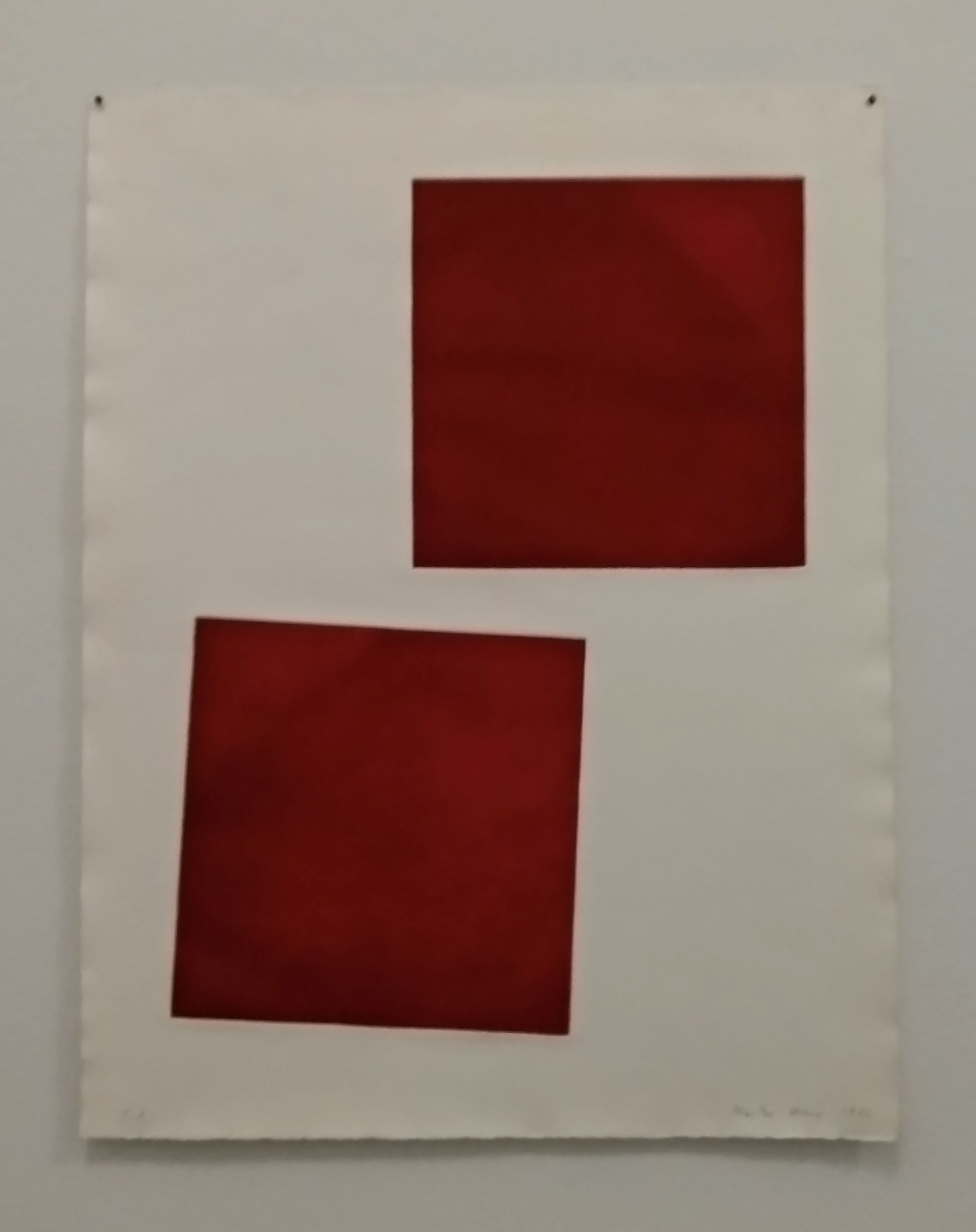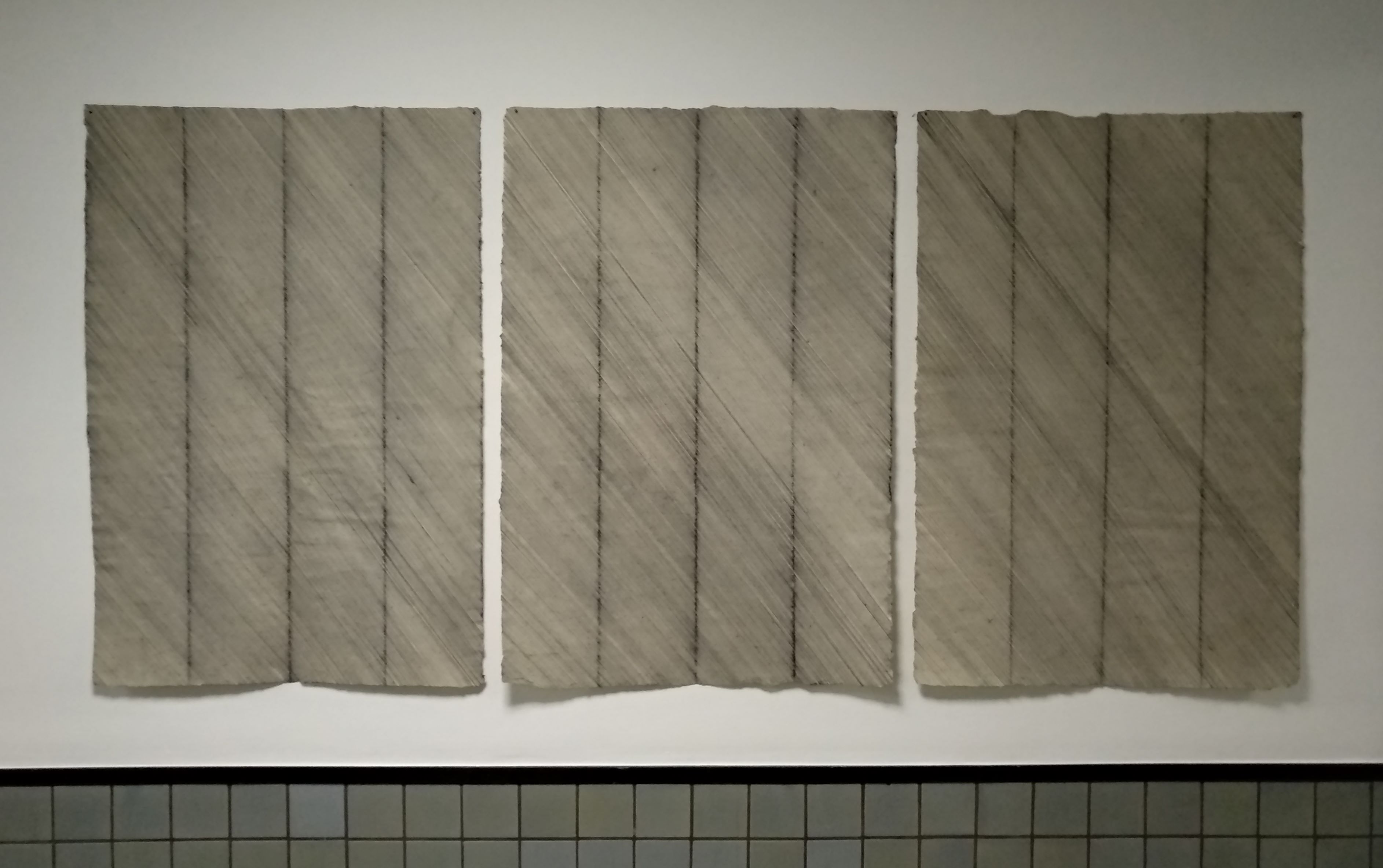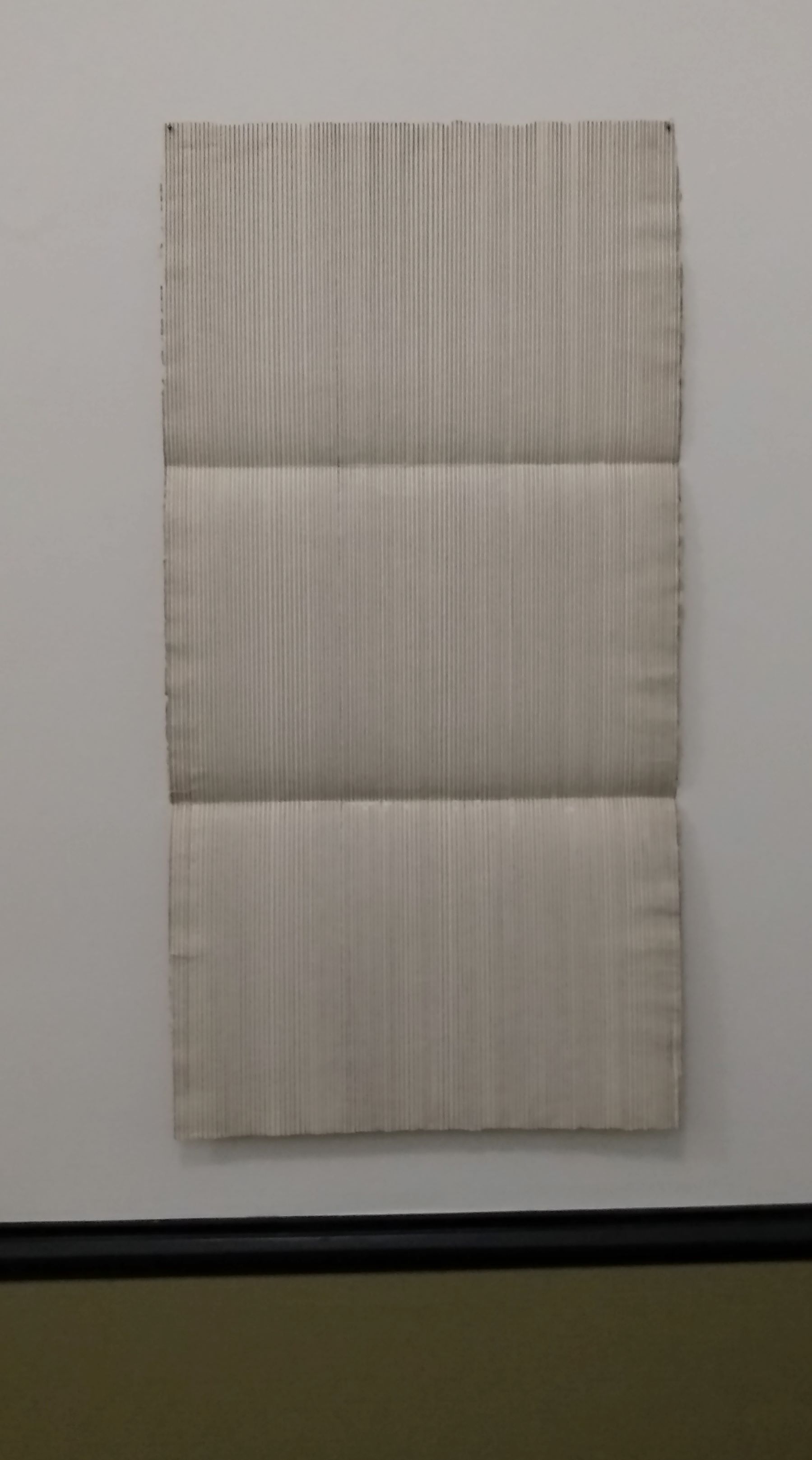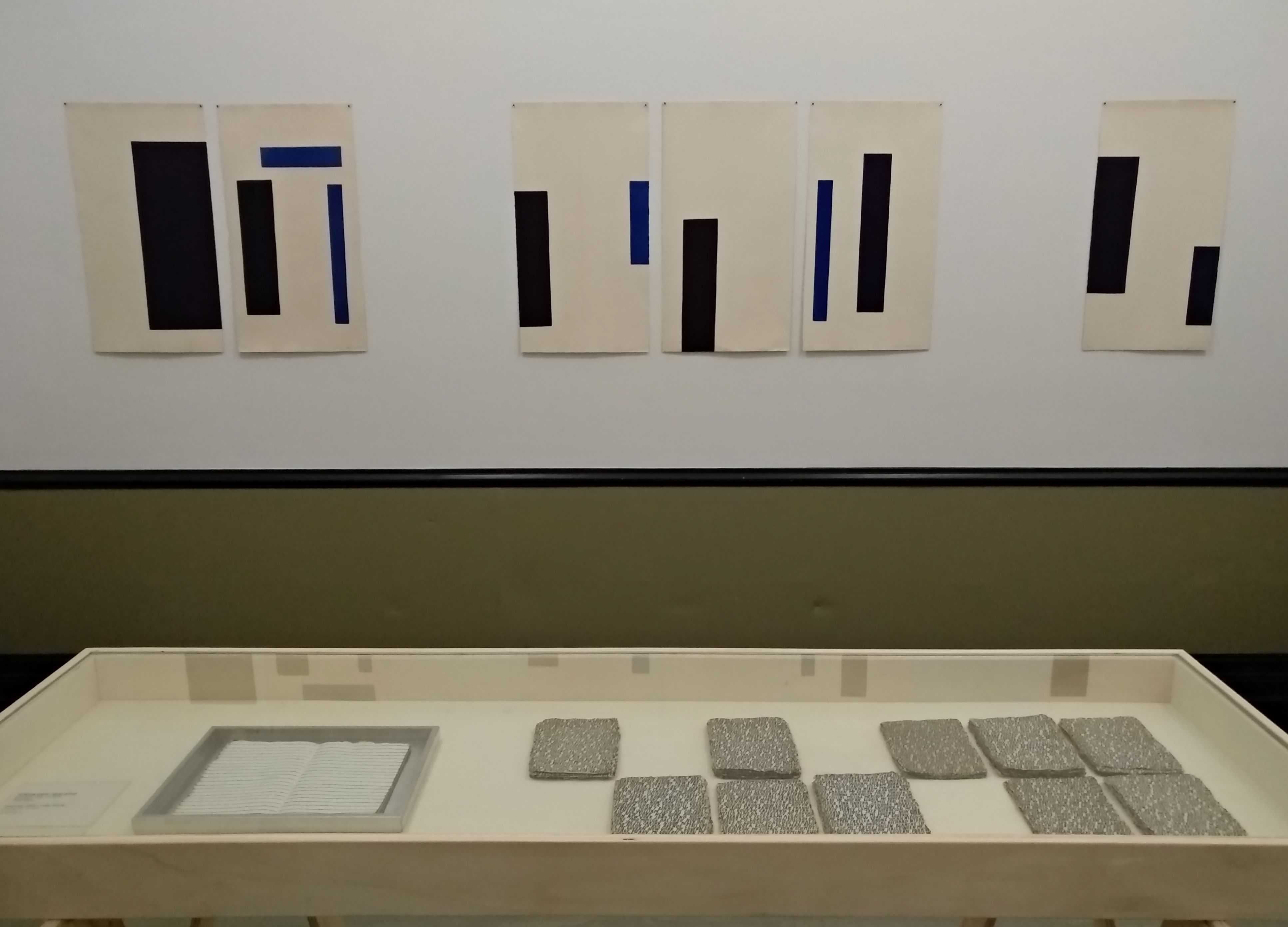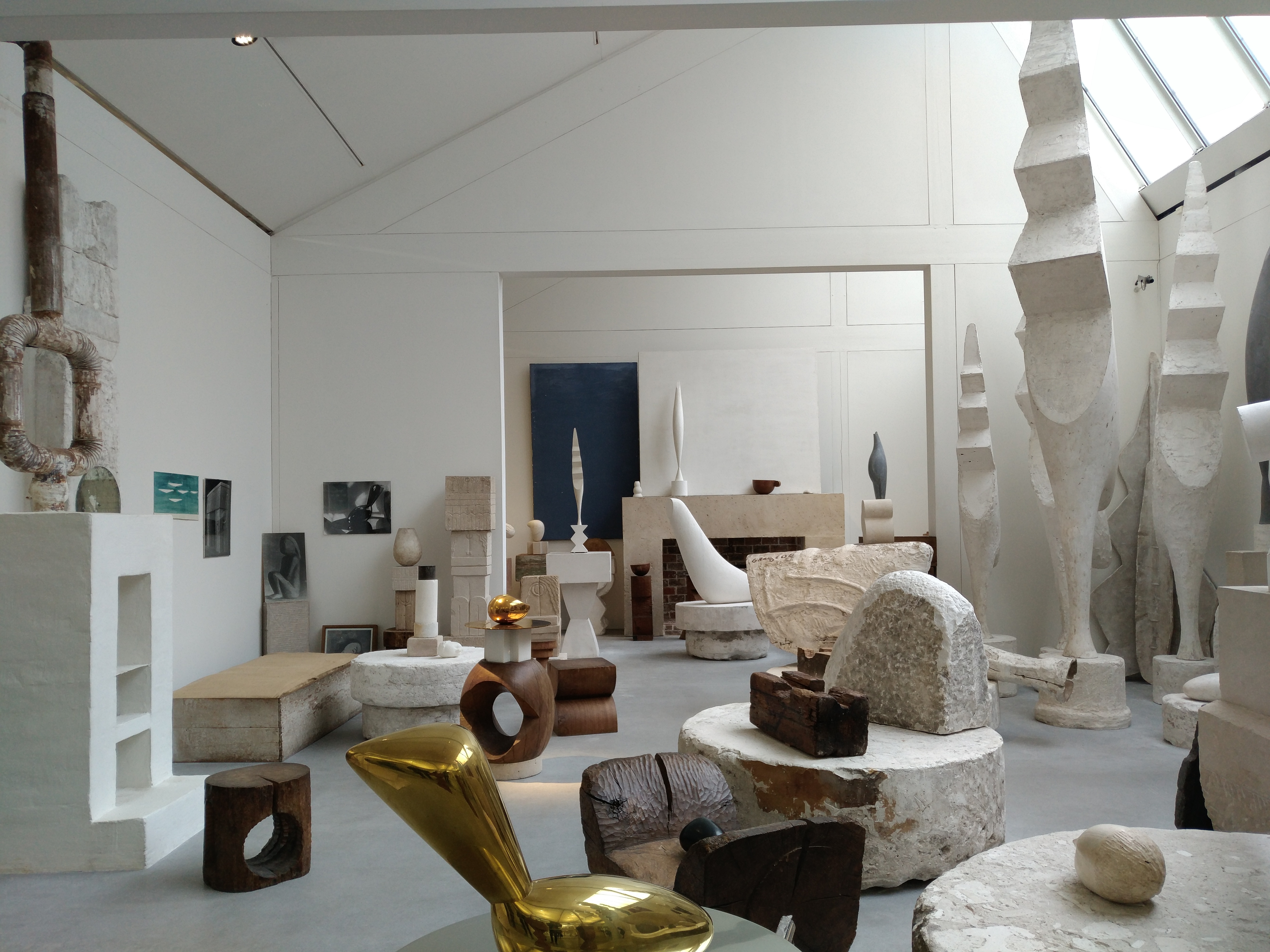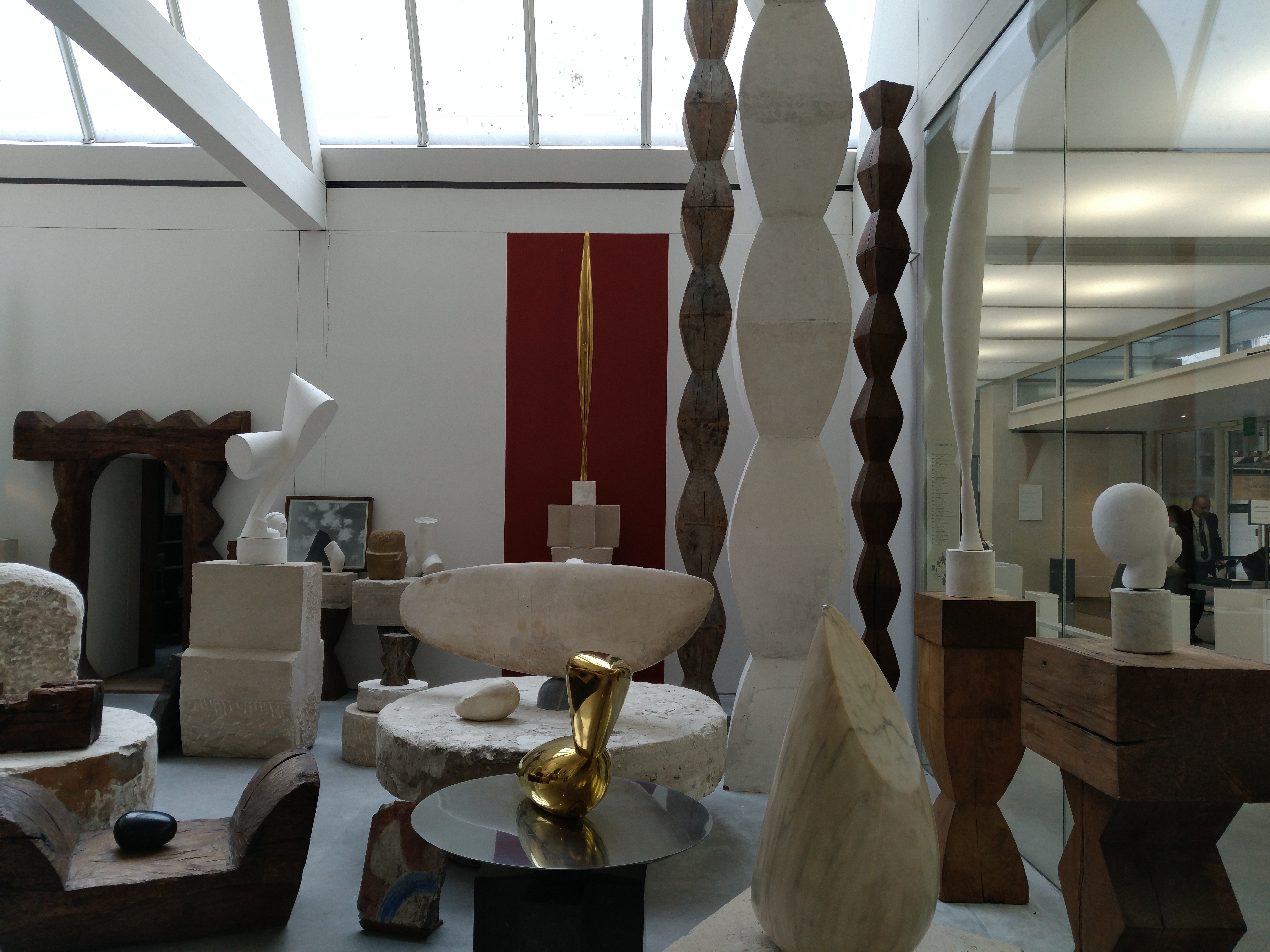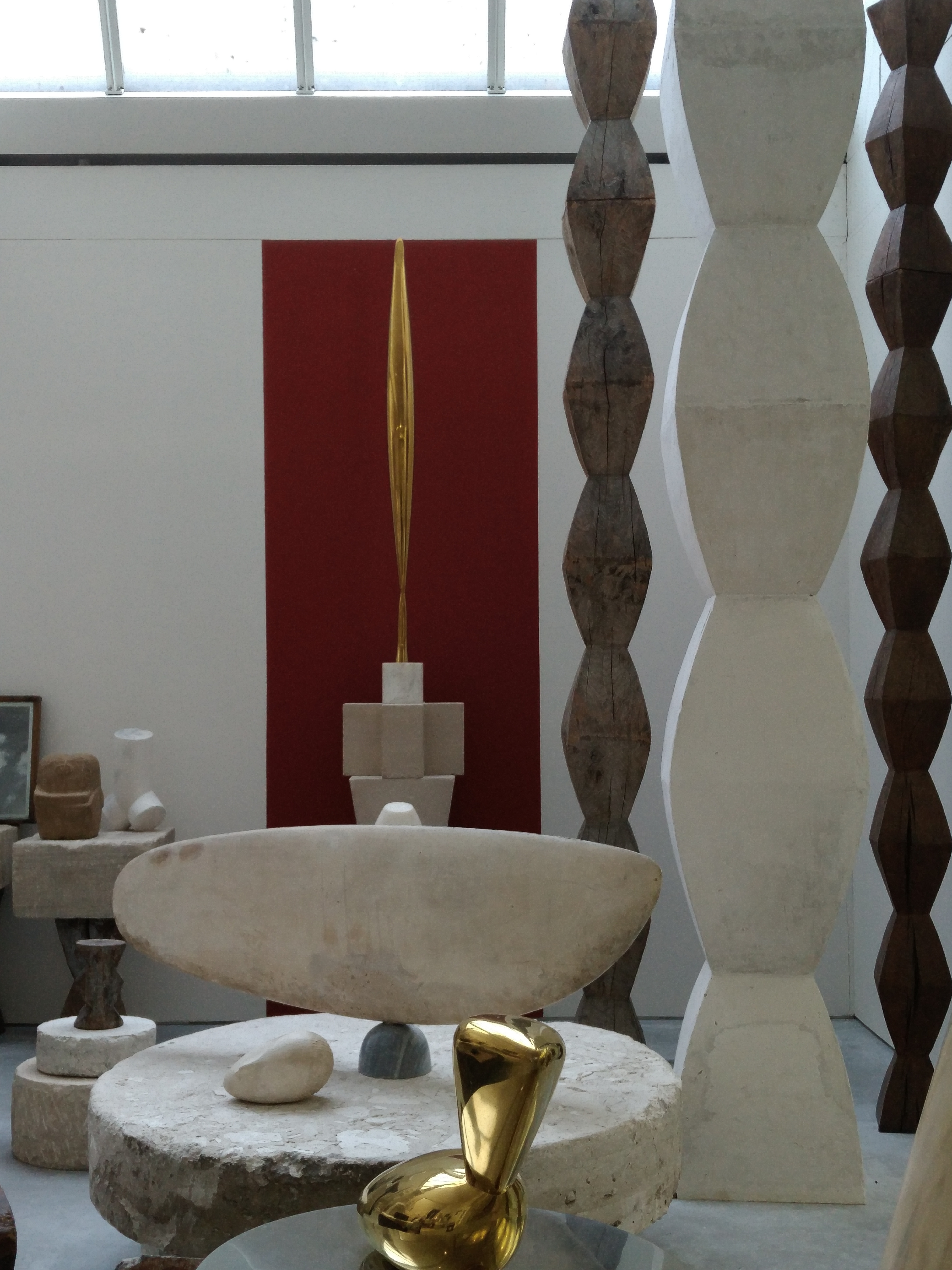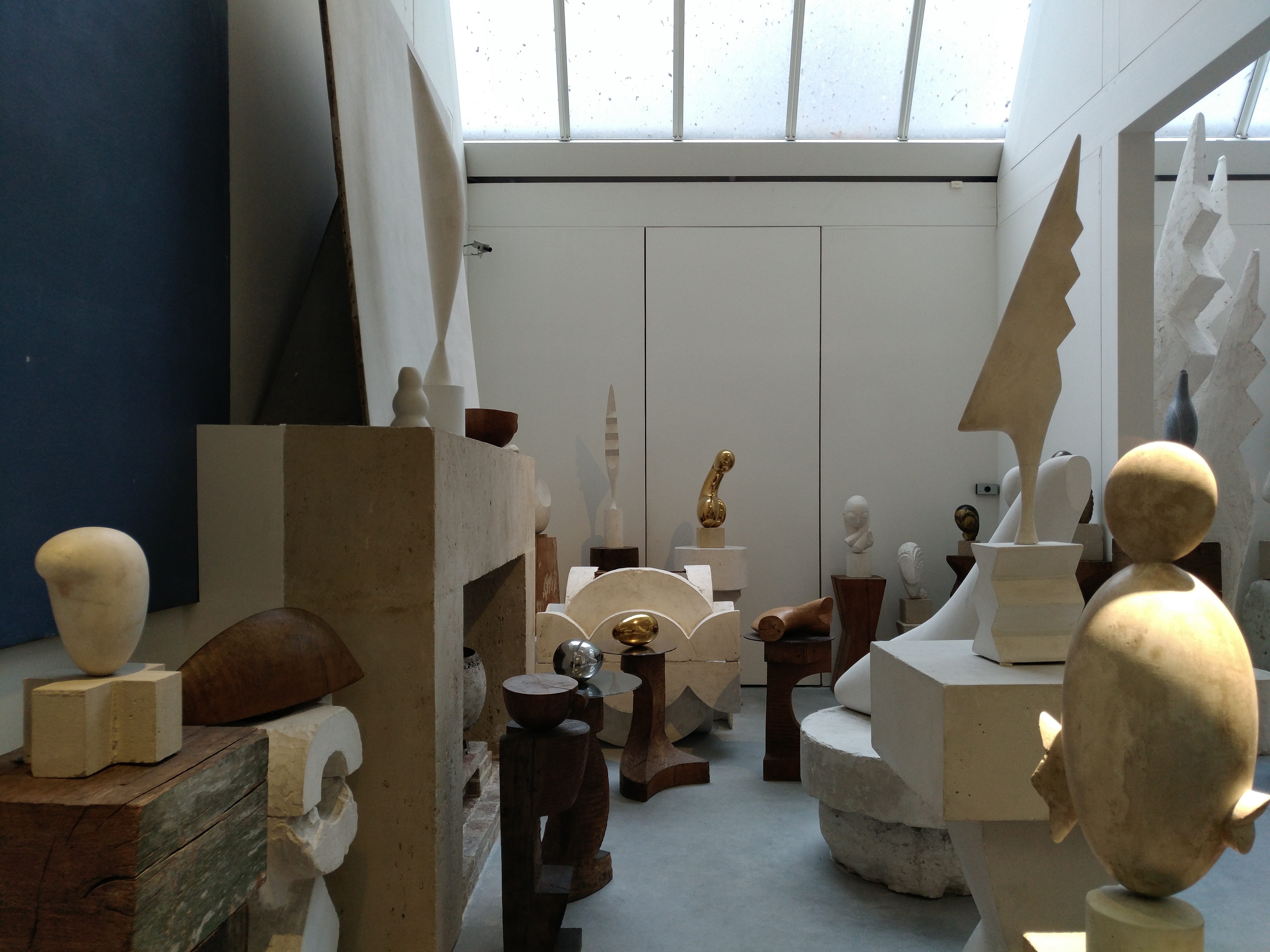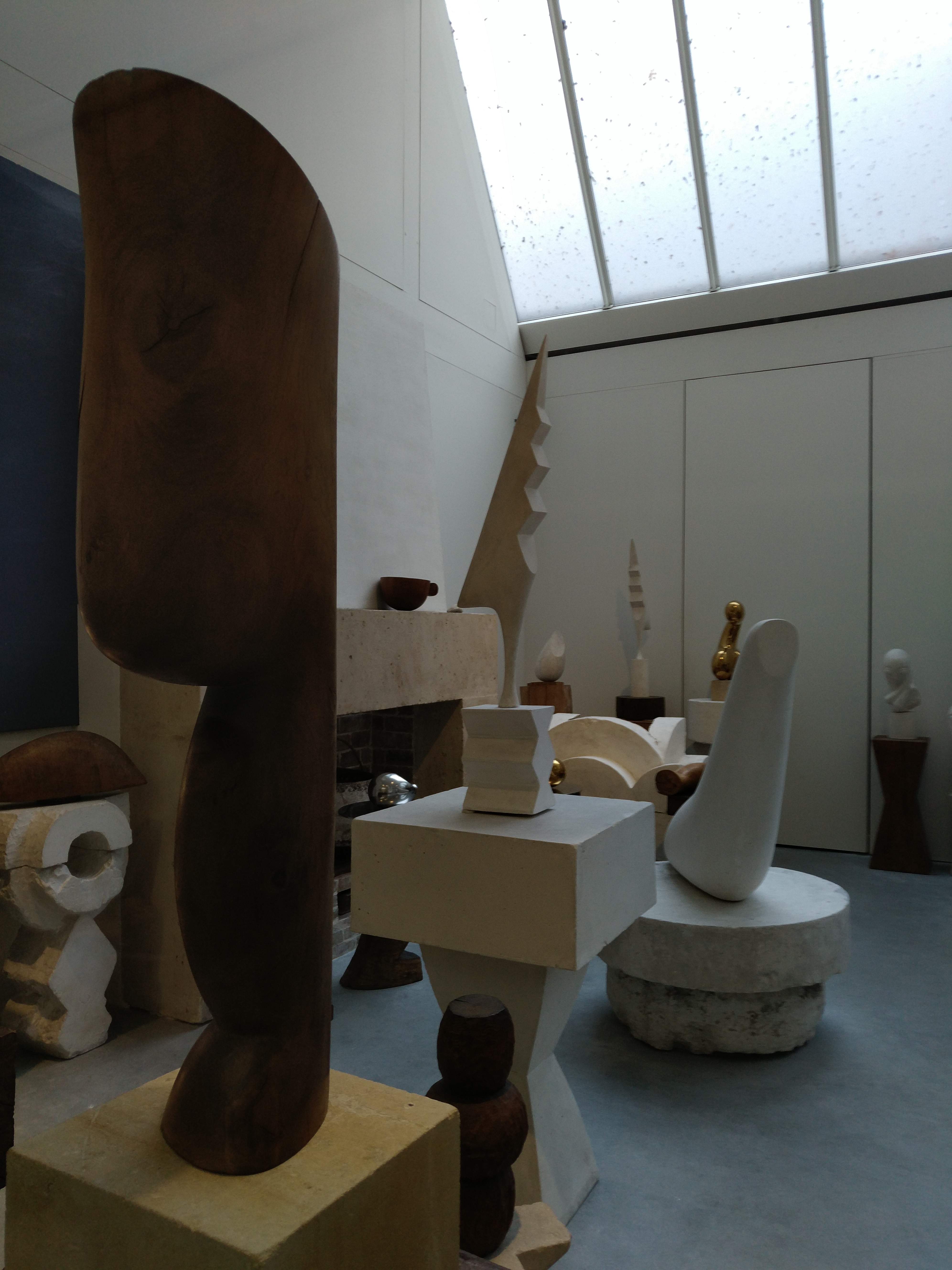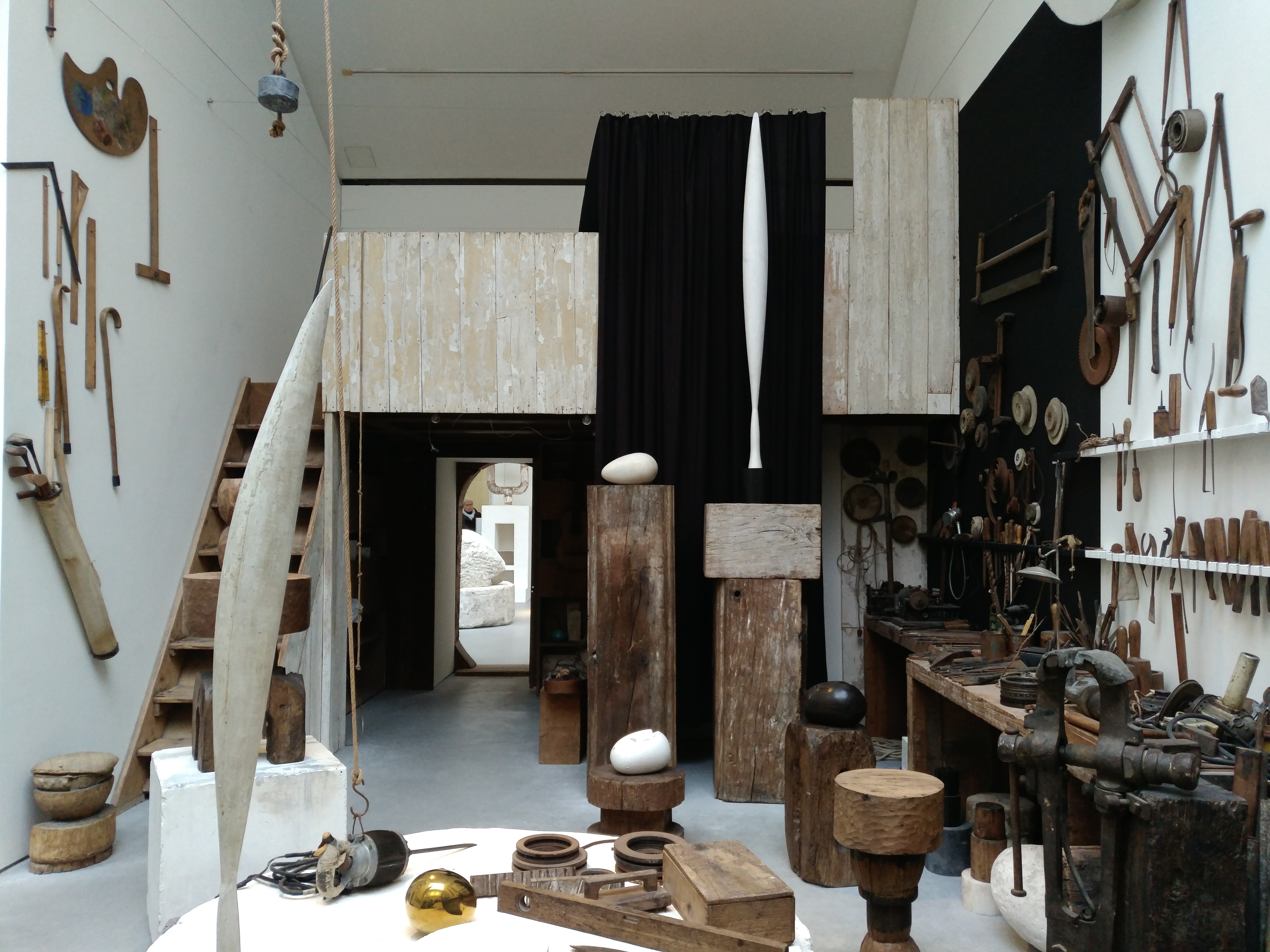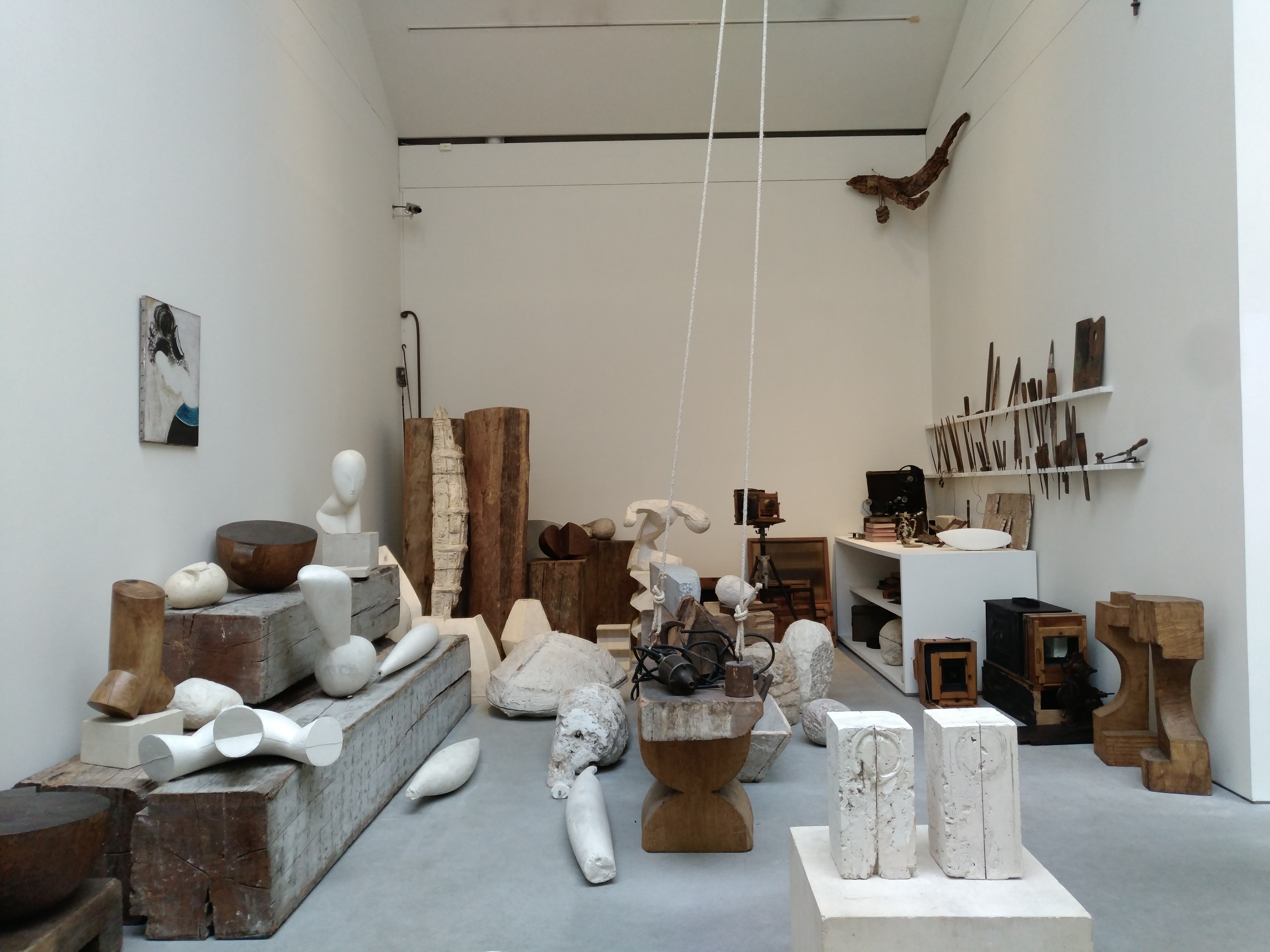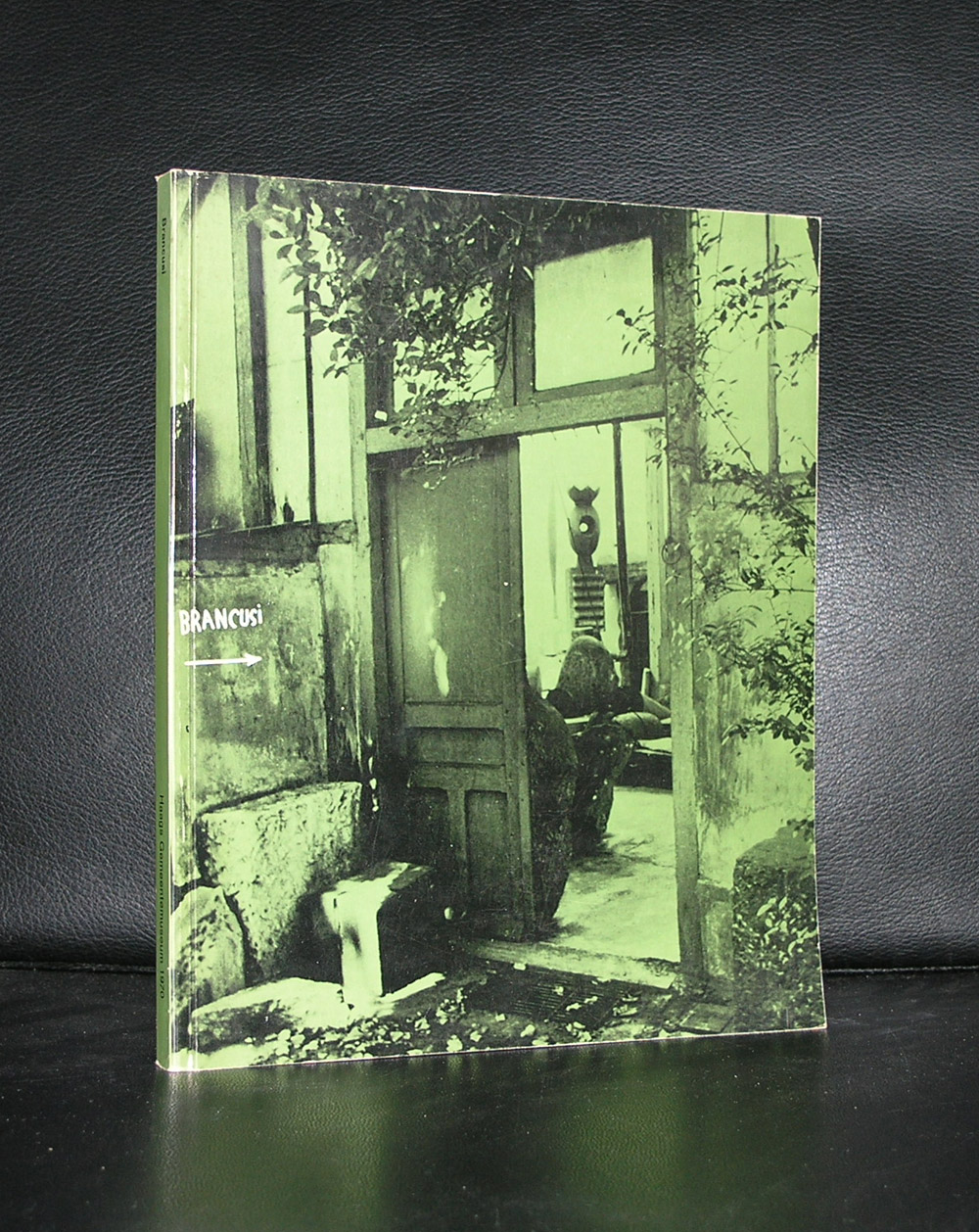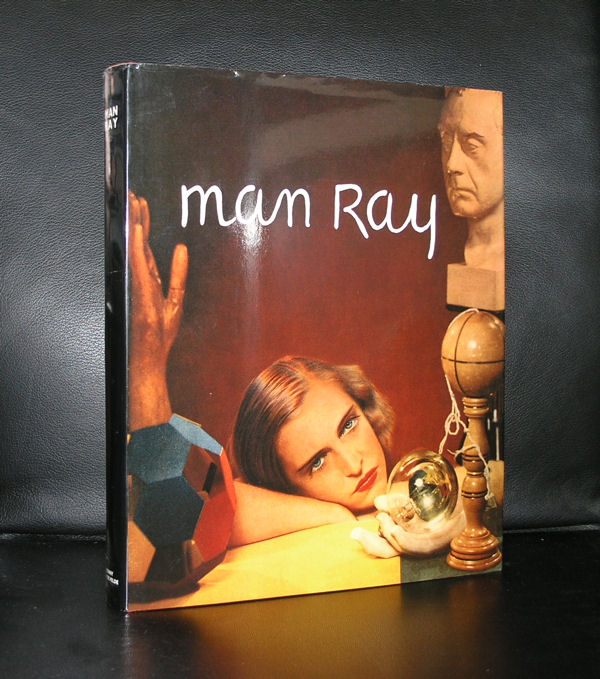I think i have a right to speak when i say that yesterdays visit at the Gemeentemuseum Den Haag for me personally was “complete Chaos” . Yes, it was a busy Sunday afternoon and there must have been well over 1500 visitors that day, making it hard to find a quiet spot within in the museum. But beside that, the collections and all special exhibitions were filled with too many objects and what is even more important there was hardly any connection between the subjects of the exhibitions. First we re-visited the Heyboer exhibition which was during the last visit a real eye opener and with this second visit confirmed its importance, but after that….when you climb the stairs…. there is an Art Deco exhibition. An exhibition which has some great elements and objects but is so crowded with objects and far too many costumes that the important art is lost among all other items. For instance in the first room there is an extremely important Brancusi sculpture and one of the most beautiful Kees van Dongen paintings ( this was new to me) which are lost because there are too many objects in the room. It would have been so much better just to present the photograph with the Brancusi sculpture, the sculpture and the Salome painting by van Dongen and the room would have been perfect.

Now room after room is filled with too many objects and it is the same with the Steltman special exhibition. Too little space and too many objects and more important, it clashes with the Ceramic exhibition of the Ceramics by Hans de Jong ( a nice selection but again no space enough). The 3 screens with Uta Eisenreich are lost in between the two exhibition parts on the 1st floor in the Projectenzaal are not fascinating enough to stay any longer period in the room than 1 minute or so. There is no cohesion between the presentations and it makes a visit tiring and not interesting enough. But ….there are 2 exceptions . First there is the mentioned Heyboer exhibition which is a must see and a great chance to discover Heyboer as a painter and certainly one of the most fascinating exhibitions i have seen last year…… It is the Marthe Wery / works on paper exhibition in the Berlage room.

Over many years, Wéry was inspired by paper to create a variety of unique forms of artistic expression, in which the visual experience is always paramount. She used Indian ink to inscribe serene straight lines on handmade paper, the various types and sizes of which contribute to the expressive power of the work. It may be smooth, formal and rational in appearance or, on the contrary, lumpy, tactile and sensually appealing. Wéry used folds in the paper to accentuate or interrupt the drawn lines or, in other works, soaked the paper in acrylic paint and carefully controlled the resulting colour gradient. She frequently created works on two, three or even more panels, installing them in such a way as to create a rhythmic harmony with the surrounding architectural space.
Around 1980, the lines gave way to letters or text. Wéry took texts by people like French artist Henri Matisse or American author Gertrude Stein as the points of departure for what she called her écritures. She also produced aquatints featuring compositions in which coloured geometrical planes interact with the white of the paper. When she began to stack drawings, placing them in bundles on a shelf, hanging them on the wall or standing them on the floor, they functioned as three-dimensional works. (Wery text by Gemeentemuseum Den Haag)
www.ftn-books.com has the very important Marthe Wery catalogue from 1986 available.




